How & Why to Properly Quarantine Chickens to Protect Your Flock
Learn how to quarantine new chickens properly to protect your flock from diseases. Follow these expert tips for a safe and healthy transition.
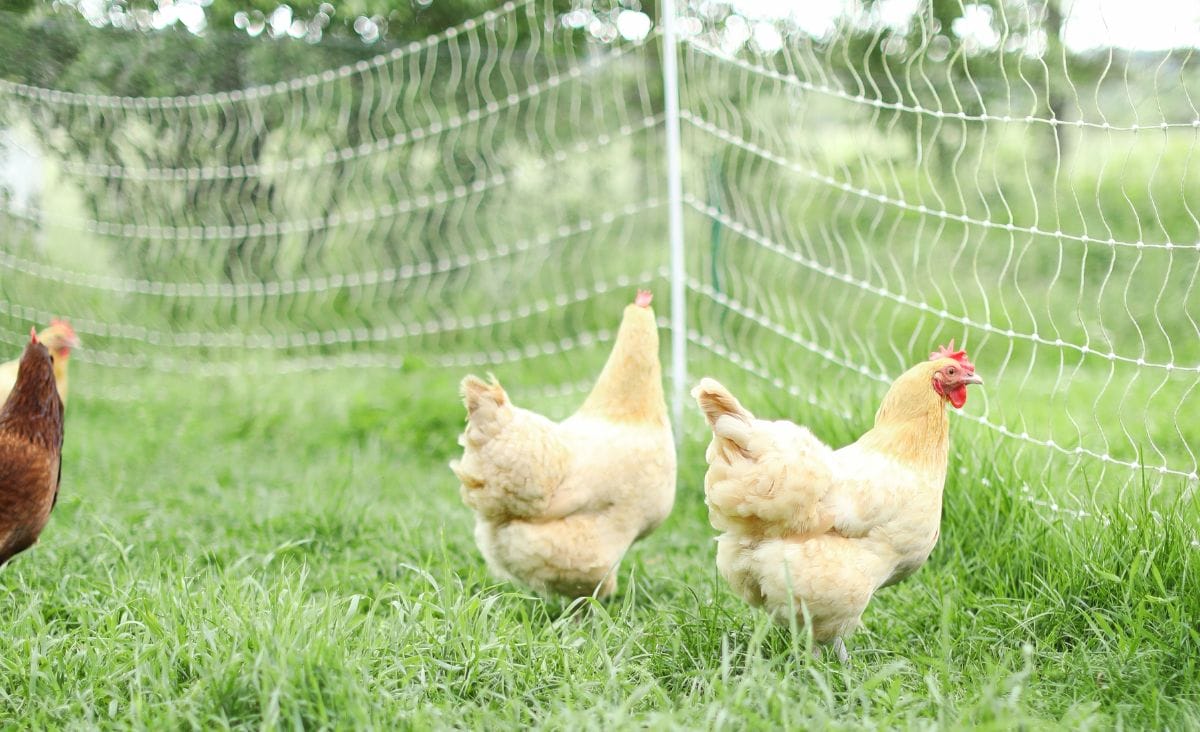
Introducing new chickens to your flock can be exciting, whether you’re expanding for fresh eggs, a specific breed, or just adding to your feathered family. But with this comes responsibility—you must ensure your flock stays healthy. Proper quarantine is an essential step that many skip, leading to heartbreak and preventable illness.
In this guide, we’ll explore why quarantine matters, how to do it correctly, and how it can save you from potential disaster. Whether you’re an experienced chicken keeper or just starting, this information will protect your flock and give you peace of mind.
10 Reasons Why Quarantine Is Essential
1. Prevent the Spread of Disease: Chickens can carry diseases without showing symptoms. Quarantining ensures new birds don’t infect your flock with respiratory issues, parasites, or other illnesses.
2. Allow Time for Observation: A quarantine period helps you watch for signs of illness, such as sneezing, eye discharge, or unusual behavior, which might not be apparent at first.
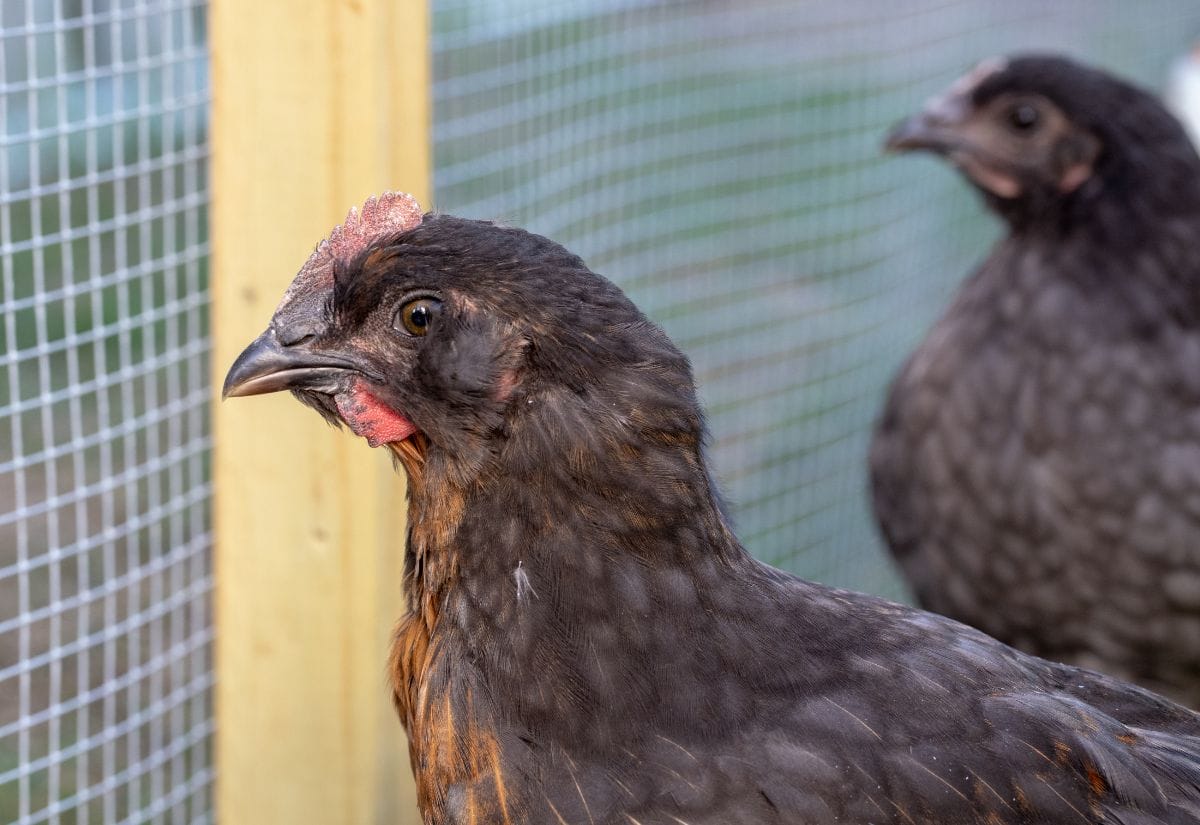
3. Protect Your Investment: Raising chickens requires time, effort, and money. A single sick bird can spread disease, potentially jeopardizing your entire flock and your hard work.
4. Reduce Stress for Everyone: New chickens may feel stressed in unfamiliar surroundings. A quarantine period allows them to acclimate while reducing stress on your existing flock.
5. Identify Carriers of Hidden Diseases: Even healthy-looking chickens can be carriers of diseases like Mycoplasma gallisepticum (MG). Quarantine prevents silent infections from wreaking havoc on your flock.
6. Protect Chickens of All Ages: Older chickens may have a weaker immune system, and younger birds are especially vulnerable. Quarantine minimizes the risk of cross-contamination.
7. Avoid Unnecessary Treatments: Treating an entire flock for a disease is costly and time-consuming. Quarantine helps isolate issues and reduces the need for widespread intervention.
8. Prepare for Successful Integration: Quarantine provides a smoother integration process. Once the birds are healthy and familiar with their surroundings, introducing them to the flock becomes easier.
9. Maintain Biosecurity Standards: Proper quarantine demonstrates responsible animal husbandry and supports the health of your backyard farm.
10. Gain Peace of Mind: By following proper quarantine practices, you can be confident your flock is protected, and you’ve done everything possible to ensure their safety.
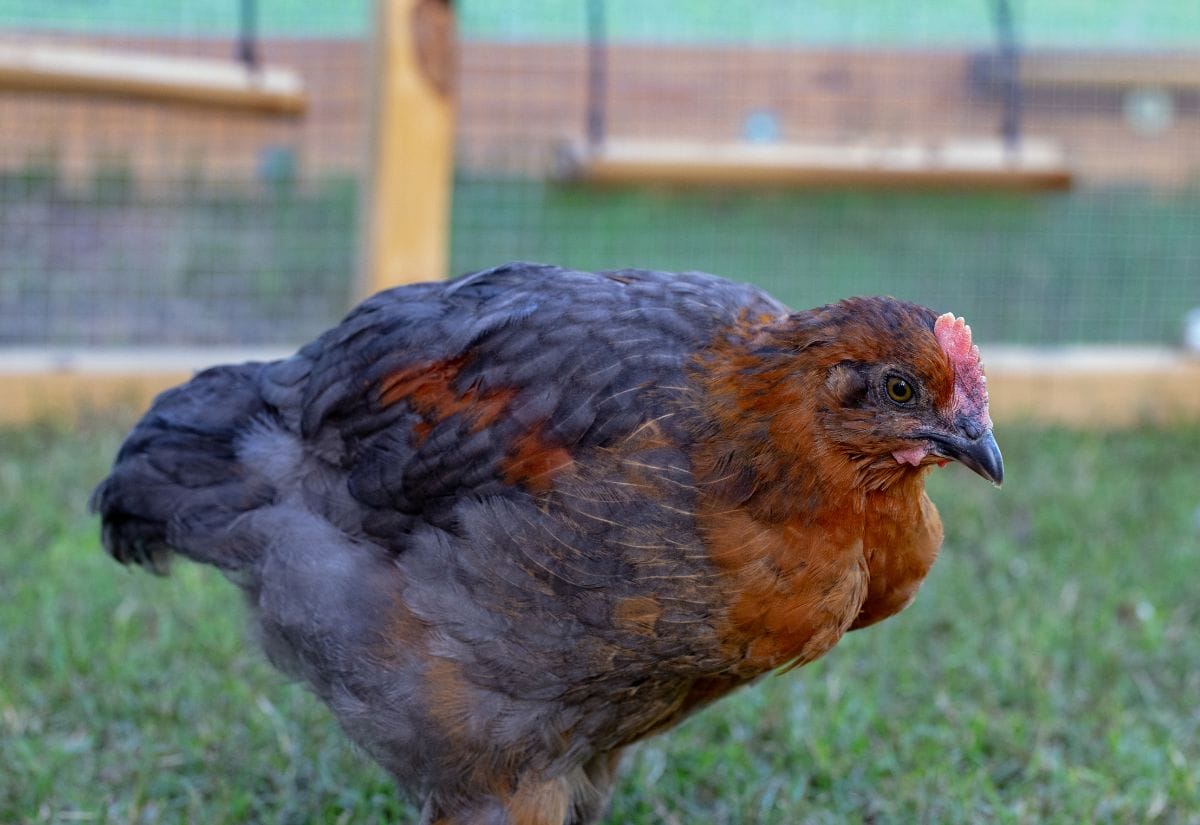
How to Quarantine New Chickens the Right Way
Ensuring a successful quarantine starts with understanding the importance of physical separation and taking proactive measures to protect both your new and existing flocks.
Keep Them Completely Separate
Maintain at least 30–40 feet between new and old birds. If space is limited, use a garage or shed for isolation. Avoid partial separation like fencing within the same area, as many diseases are airborne.
Treat New Birds as if They’re Sick
Act as if the new chickens are carriers of illness to ensure you take every precaution necessary. Wear different clothes and shoes when tending to the new birds to avoid transferring potential pathogens to your existing flock. Disinfect any equipment used for the new chickens, such as feeders, waterers, and tools, before and after each use.
For normal disinfectants, use a diluted bleach solution (1 part bleach to 10 parts water) or a disinfectant safe for poultry. Allow the items to air dry completely after disinfection.
If you prefer organic options, use a vinegar solution (1 part vinegar to 3 parts water) or hydrogen peroxide, both of which can effectively reduce bacterial contamination. Essential oil-based disinfectants, such as those containing tea tree or eucalyptus oil, can also work as natural alternatives. Make sure to rinse equipment thoroughly after using organic disinfectants to avoid leaving residues.
Keep all equipment, tools, and supplies for the new birds completely separate from those used for your original flock to further reduce the risk of cross-contamination.
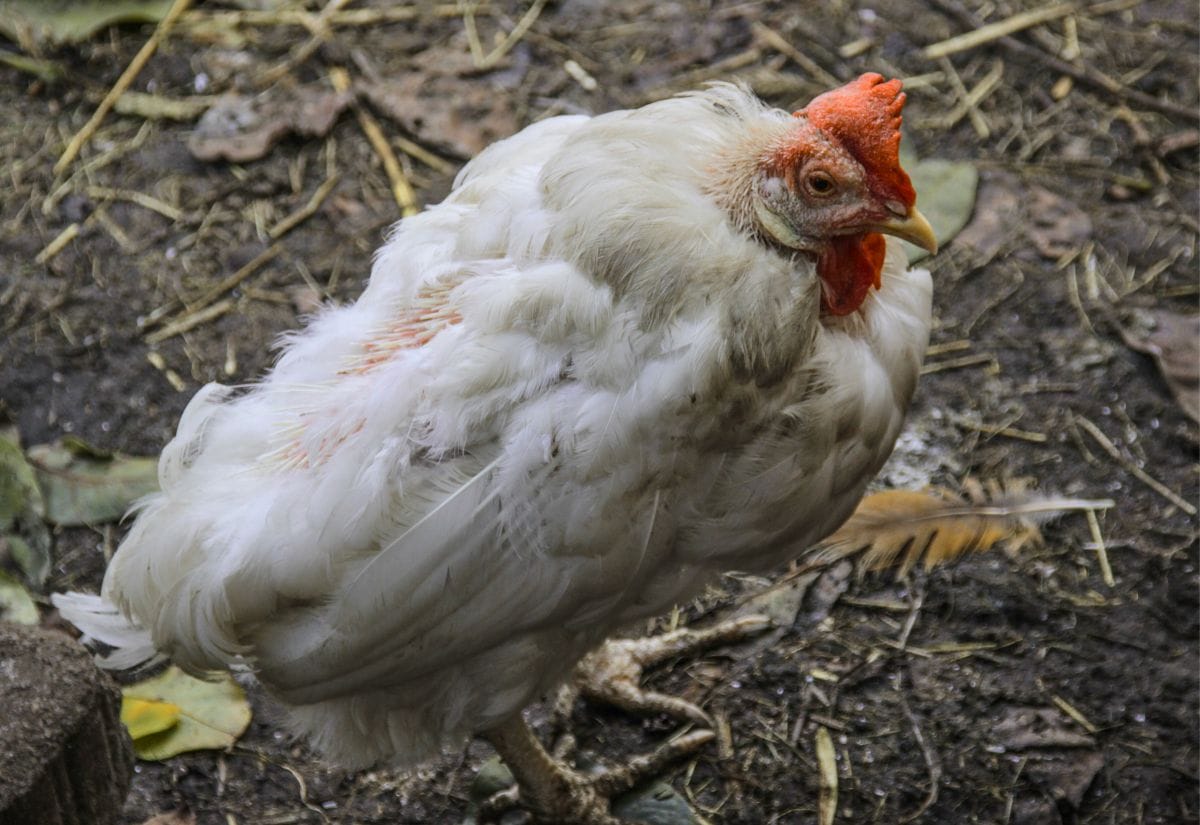
Observe for Signs of Illness
Watch for symptoms like:
- Sneezing or coughing
- Discharge from eyes or nostrils
- Swelling around the eyes or comb
- Lethargy or unusual behavior
- Abnormal droppings
Extend the Quarantine Period
While two weeks is the minimum recommended, extending quarantine to 30 days or more is better. This time frame ensures any illnesses with longer incubation periods have time to show.
Practice Biosecurity
Handle your original flock first before interacting with the new birds to minimize the risk of transferring any potential diseases or pathogens. Afterward, change your clothes and footwear and wash your hands thoroughly to avoid cross-contamination between the flocks. Additionally, when visitors come to your homestead, especially if they have contact with other birds or poultry, ask them to wear clean clothes and footwear or provide disposable boot covers to maintain biosecurity. Always limit unnecessary contact with your chickens to reduce the chances of introducing harmful bacteria or viruses.
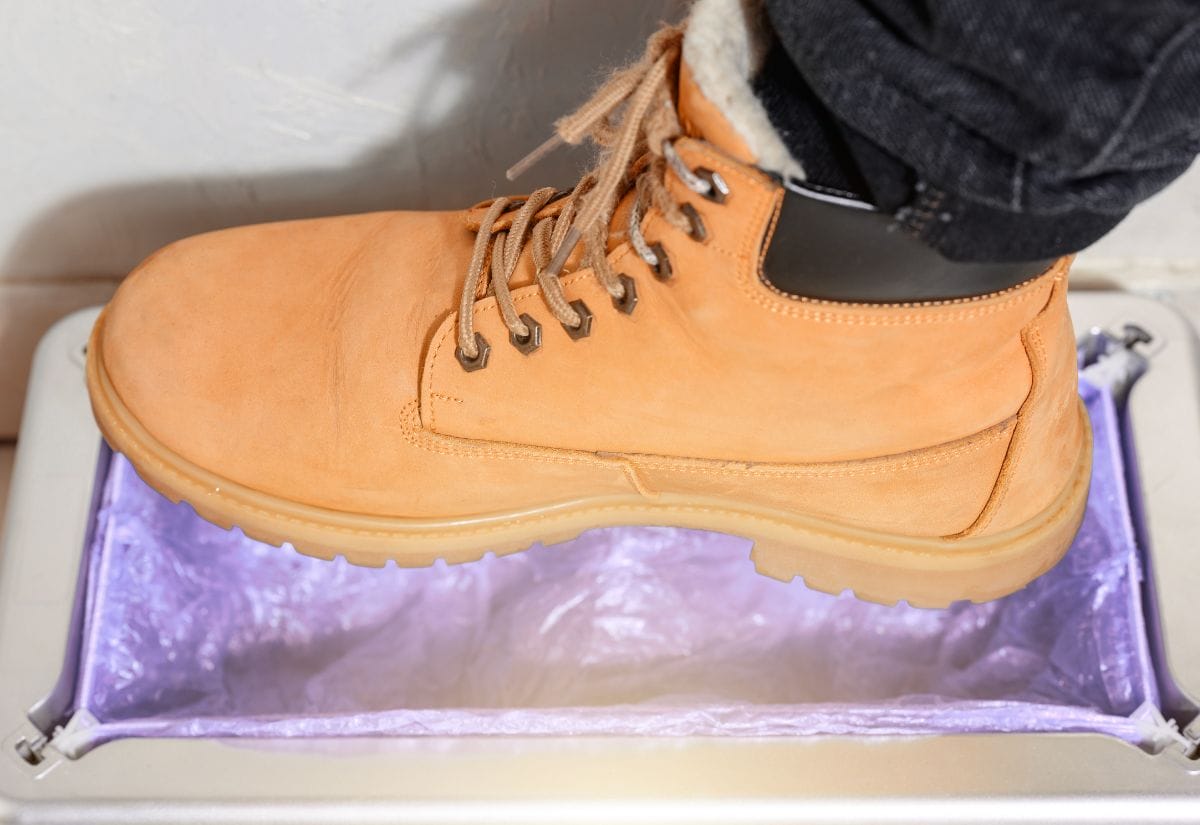
Quarantine Tips from Experience
When I first started keeping chickens, I underestimated the importance of proper quarantine. I trusted a seller and skipped the process, thinking it wouldn’t happen to me. Unfortunately, a single carrier bird infected my flock, resulting in heartache and loss.
Now, I never skip quarantine. I keep new birds in a shed at least 40 feet away from the flock, monitor them daily for signs of illness, and use separate equipment for each group. This extra effort has saved me from repeating past mistakes.
If you’re limited on space, consider using portable chicken coops or pop-up pens for quarantining birds. These can be placed in a garage or sheltered outdoor area to keep new additions separate.
Common Questions About Quarantining Chickens
Don’t lose this—keep your flock safe by pinning it!
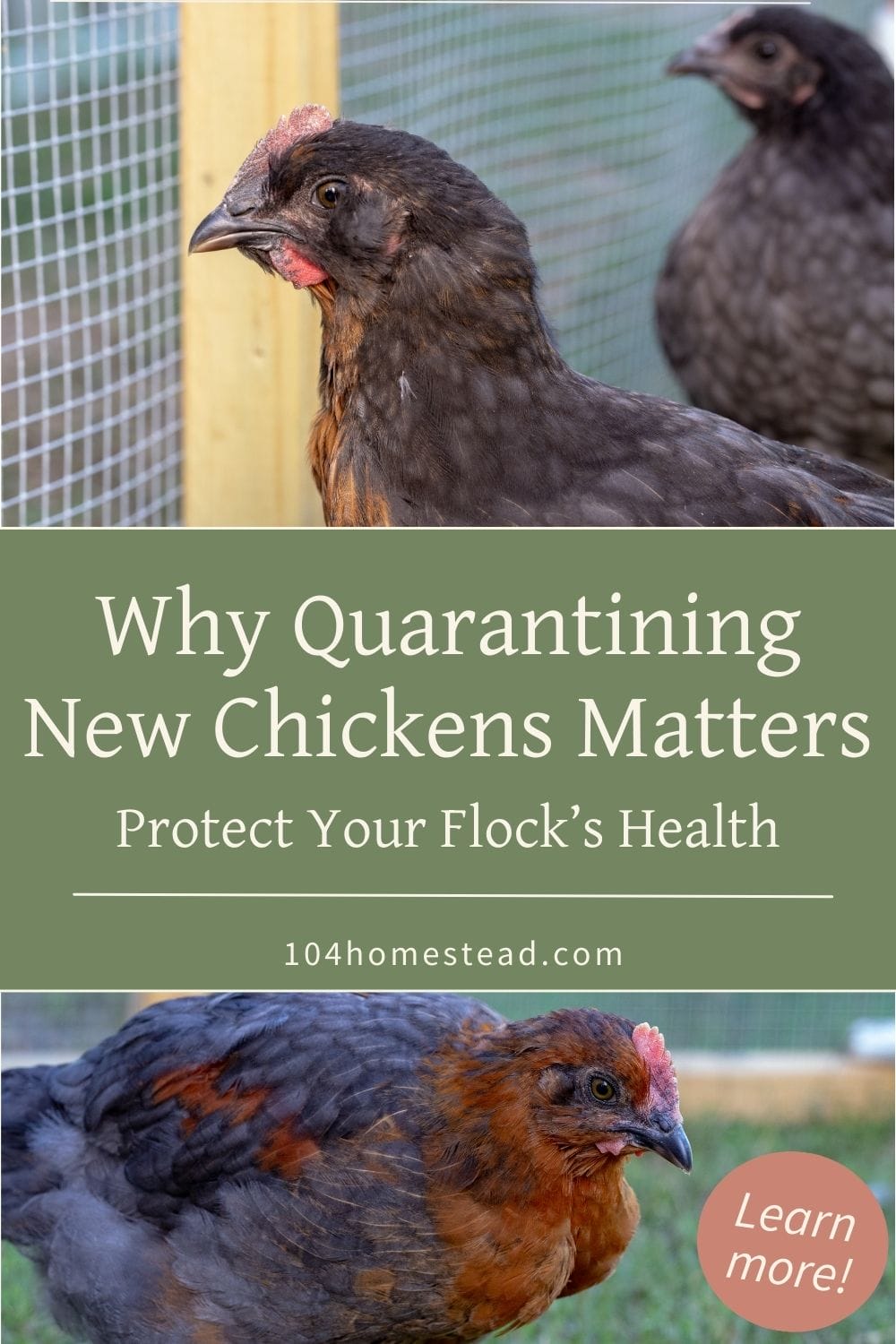
Quarantining new chickens may take extra effort, but it’s a critical step in protecting the health of your flock. By keeping new birds isolated and observing them closely, you can avoid heartbreaking losses and ensure the longevity of your chickens. Take the time to do it right, and your flock will thank you for it.
Expanding your flock or learning how to care for your chickens better? Discover ways to identify your new feathered friends based on their unique features, understand common health concerns like respiratory issues, and ensure their safety by maintaining their environment and managing their behavior. Plus, explore a guide to safe plants that can enhance your chickens’ diet and well-being. These tips will keep your flock happy and thriving.
How do you handle quarantine for your flock? Share your tips and experiences below!





I have difficulty choosing chickens to breed, because all breeds are the same. I can distinguish a certain number of chickens but not enough knowledge to distinguish them. Your article is very helpful for me, I will always support you.
This could not have come at a better time. Just yesterday I was offered 2 1-yr-old Cochins from a friend. We knew that quarantining was necessary and before I could google the best way to do this, VOILA!! Your email came. Thanks for the solution!
As best I can find, it appears the breed of the chickens pictured are Capines. See more at the links enclose. (They come in golden and silver)
https://www.omlet.us/breeds/chickens/campine/
https://www.google.com/search?q=campines+chickens&tbm=isch&tbo=u&source=univ&sa=X&ved=0ahUKEwi1qqCll-LMAhUBdR4KHbYGA7QQiR4IjwE&biw=1713&bih=1045
Thanks Lisa!
I would also love to know what type of hens those are pictured above.
The Lakenvelders I find on google search are very white and have very black head and hackle (neck) feathers and a black tail – these must be someone’s hybrid mix w/a Plymouth Rock type breed? I too would love to know what they are – they ARE gorgeous!
I too, have an important lesson regarding quarantine – and it includes a lesson on not looking a gift-horse in the mouth too, Our propane guy said he was “overrun with 75 chickens too many” and because of that, many of his flock were being pecked bald. He said he’d love to give me a dozen 1+ year-old hens, and he came the next day. His chickens were truly half bald. In fact one little Rhode Island Red hen and a gold hen looked like they were ready for a baking pan – they were that pathetic.
Of course my quarantine space wasn’t adequate- just a fenced-off space IN the coop…. but it didn’t matter, the new birds escaped it as we were releasing them in. Well, there were few squabbles and it seemed things were fine. And it is a long story, including some of the hens turning into roosters, ha ha on me, but in the end, things were fine until my old rooster died – over a year later.
I wanted to say good bye to him and held him on a mat, on my lap for about 20 minutes. Then I felt itching on my scalp… several times. It occurred to me that it wasn’t normal nerve endings going off, and it wasn’t my imagination. I put him down and felt heebie-jeebie itching on my arms too! I ran in and got a magnifying glass to look at the little piece of sand on my arm – I quickly discovered that it was a poultry louse!! [They don’t infect people. My rooster was dying and the lice had been moving off him. Thanks be for the internet, right? LOL] After a very long hot shower I was able to come to my senses… and also knock myself up the head (like I could’ve had a V-8).
The reason those poor birds were bald, was because they had a louse infection the propane man couldn’t or wouldn’t handle.
THEN I had a flock of birds to treat, and grounds to treat and a coop to treat…. and it was definitely not fun. It apparently is a pretty common condition, and can be spread by wild birds easily. It was ‘kept in check’ in my flock, because they could dust-bathe and were kept clean and healthy otherwise. I might never have figured it out unless things got out of hand in one of those maintenance areas. So, quarantine, AND inspect new birds closely (and the flock on a routine basis)!
Needless to say, this is an important topic to share, and these are all good lessons for us in managing livestock. I’ll certainly be more diligent when I get chickens again!
Great advice! I am lucky enough to have the space for 2 separate pens, about 350 ft apart thanks to my pie shaped suburban lot. The second pen has a very small coop and is in deep shade. I usually lead the chickens to the second pen on hot summer afternoons or if I need to do some work on pen #1. While I wouldn’t typically keep my flock in pen #2 over night due to the small coop size and lower pen security it does come in very handy for quarantine’s. Can you tell me what breed the chickens pictured on this post are please?
They are Lakenvelders. Beautiful birds, aren’t they? I wish they were mine 🙂
We are about to get some FFA Show Chickens in about a month. I didn’t have to worry about this last year. The FFA hens were our first chickens. Now we have a flock on 6, and I think I need to talk to my husband tonight about segregating the new ones
It is definitely the safest route. An infected chicken may not show outward signs of illness. Better safe than sorry.
What you can do which helps with the clothing issue is to take care of your chickens first and then take care of the new chicken(s).
Great solution. You know how sometimes the most obvious solution is staring right at you and you just don’t see it? Lol
Too funny. I came to see about quarantining people. 🙂
Can’t help a lot there 😉